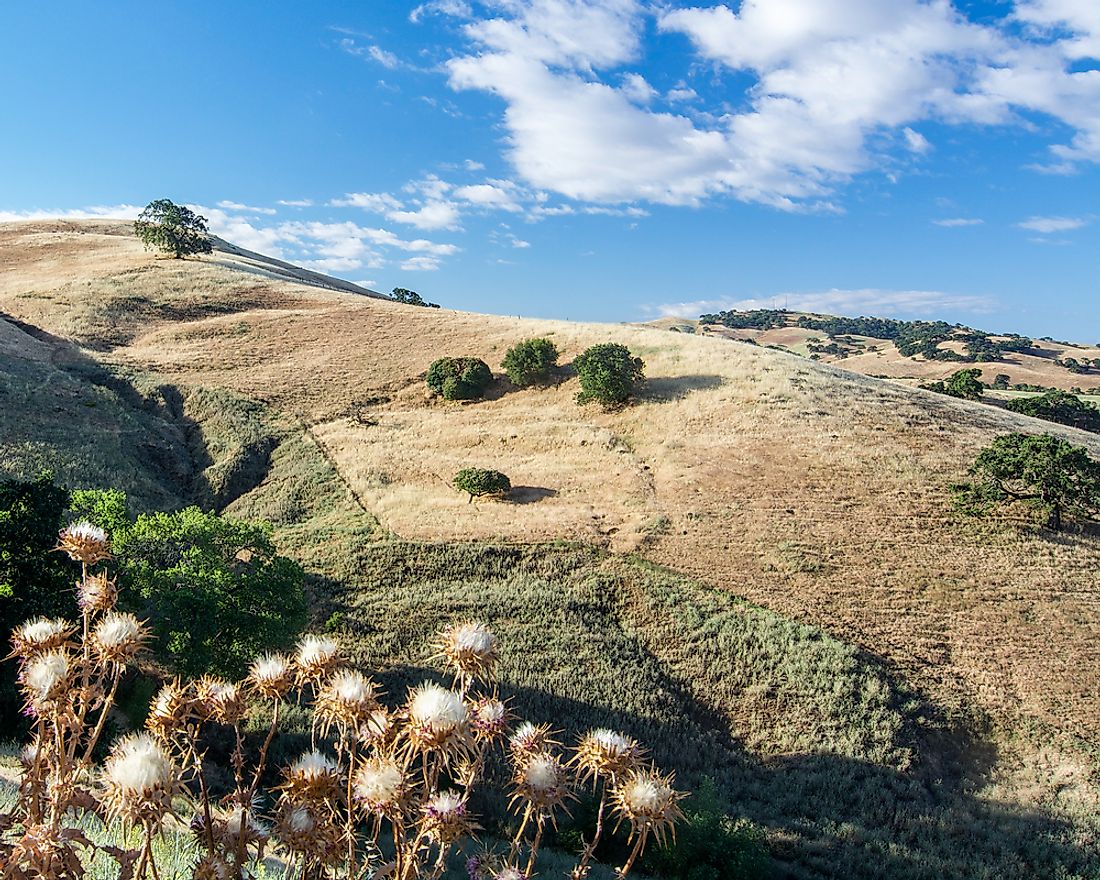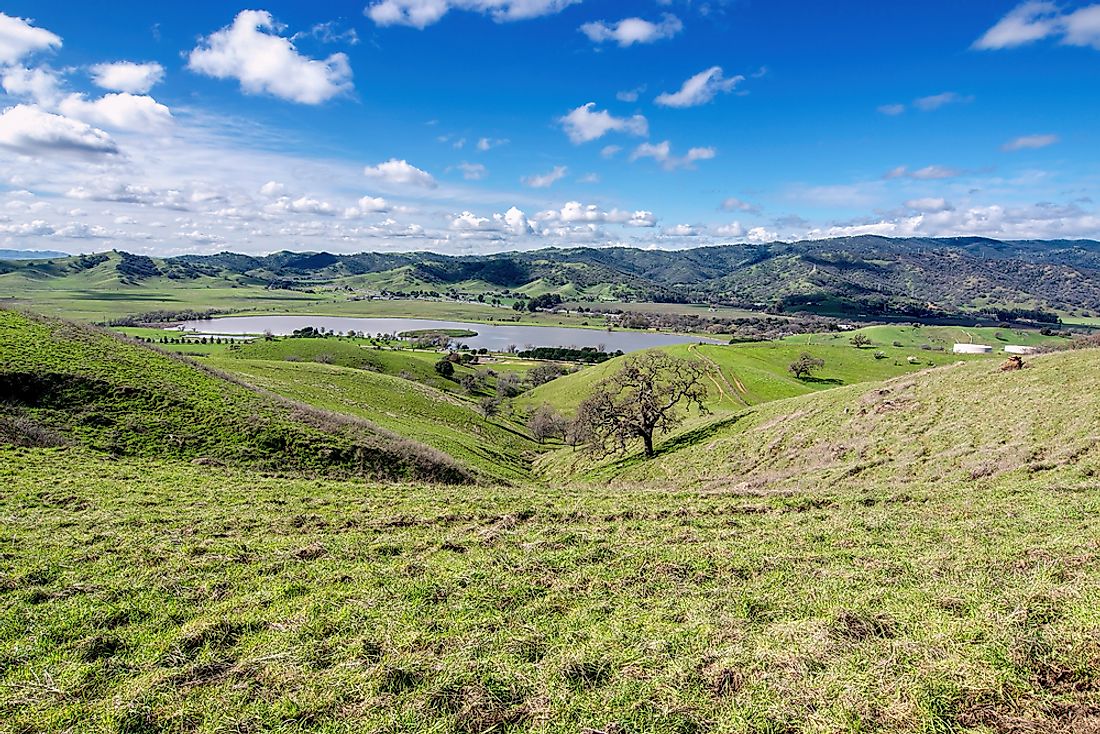The Different Types Of Shrubland Biomes Across The World

Shrubland biomes are the bioregions where vegetation is dominated by evergreen sclerophyllous plants, particularly shrubs and short grasses. Shrublands are either naturally formed or established by human activity. Shrubs are short woody plants which have an extensive network of branches and do not surpass 8 meters in height. Shrubland biomes are normally found in regions experiencing long-dry summers and hence are quite susceptible to fires. There are six major shrubland biomes found in the world, and these are the Chaparral in North America; the Matorral in Southern Europe (Spain), North America (Mexico) and South America (Chile); the Maquis in Southern Europe (France and Italy); the fynbos in South Africa; the kwongan in Southwest Australia; and the Cedar Scrub in Texas. Many of the shrublands biomes in the world are home to endangered plant and animal species. The biomes themselves are under constant threat of destruction caused by human encroachment.
6. Chaparral in California

The Chaparral is a large ecoregion which covers the west coast of North America. The chaparral encompasses a 121,000-square kilometer area which covers the states of California (United States) and Baja California (Mexico). The chaparral is made up of three sub-ecoregions: the California interior chaparral and woodlands, the California montane chaparral and woodlands, and the California coastal sage and chaparral ecoregion. The Chaparral falls under the Nearctic ecozone. However, some ecologists state that the chaparral is part of the California Floristic Province, which also encompasses other surrounding ecoregions. While the majority of the chaparral is comprised of woodlands and scrub, the ecoregion also features Mediterranean forests. The Chaparral is an important habitat for many rodent species which include the Santa Cruz kangaroo rat, the Hermann kangaroo rat, and the white-eared pocket mouse. Other animals found in the Chaparral include the Costa’s hummingbird, the rosy boa, the California condor, and the coast horned lizard.
5. Matorral in Southern Europe, North America and South America

The Matorral is a shrubland ecoregion which is situated in different locations in the world. The shrubland biome is defined by the Mediterranean climate experienced in the ecoregion. The ecoregion which is found in Southern Europe, North America and South America is known by different names. In Portugal, the ecoregion is known as the “matagal” or “mato.” In Israel, the Matorral is known as the “Batha,” while in Greece, it is known as the “Phrygana.” While shrublands are the main components of the Matorral, in some areas the ecoregion is interspersed by grassland and forests. The term “matorral” was introduced to South America to define the shrubland biomes in Chile and Western Brazil by Portuguese colonial settlers.
4. Maquis in Southern Europe

The maquis (French) or macchia (Italian) is a shrubland biome found in Southern Europe, and particularly in France and Italy. The maquis biome is characterized by evergreen shrubs growing at dense concentrations. The ecoregion is found in regions with limestone-rich soils such as Southern France. There are two main categories of the maquis, and these are the high macchia and the low macchia.
3. Fynbos in South Africa

One of the well-known shrubland biomes in Africa is the fynbos of South Africa. Fynbos is an extensive region in the Western Cape of South Africa which is home to natural shrubland. Despite being situated in the southern part of Africa, this region experiences a Mediterranean climate which is characterized by a long dry season, with few interruptions of short rains. The term “fynbos” is derived from a Dutch term “fynbosch,” the name given to the region by 20th-century Dutch settlers. According to John Bews, an early Dutch explorer, the term fynbosch applied to the region around the Cape which had a sparse woodland growth, void of any timber trees.
There are numerous different habitats in the fynbos including the dominant shrubland, woodlands, and Mediterranean forests. The fynbos is among the regions with the richest biodiversity anywhere in the world, with as many as 6,000 plant species that are endemic in the biome. While the fynbos covers about 6% of southern Africa’s land area, it is home to more than 50% of southern Africa’s species. The grass found in the fynbos has an exceptional degree of endemism. The fynbos biome forms part of a large bioregion known as the Cape floral kingdom and makes up about 50% of the floral kingdom’s area. Evergreen sclerophyllous plants make up the majority of plant species in the fynbos. The fynbos is further segmented into two distinct sub-ecoregions which are the montane fynbos and renosterveld, and the lowland fynbos and renosterveld. The montane fynbos and renosterveld are defined as the shrubland situated in regions with elevations surpassing 300 meters above sea level (usually referring to the fynbos situated in the Cape Fold Mountains), while lowland fynbos and renosterveld is the region with altitudes below 300 meters.
2. Kwongan in Southwest Australia

The kwongan is a shrubland ecoregion found in the southwestern region of Australia. The term “kwongan” is an Aboriginal term used to define a region with sandy terrain scrubby vegetation and void of timber trees. The kwongan is renowned for its biodiversity and is considered as a global biodiversity as it home to thousands of plant species found nowhere else on earth. There are an estimated 5,500 native plant species in the kwongan, accounting for about 70% of the total plant species in Southwest Australian Floristic Region that forms part of the shrubland. The biological composition of the kwongan is not extensively studied, partly due to the remoteness of the region. Scholars in the University Of Australia suggest that the ecoregion deserves to be considered as a World Heritage Site.
1. Cedar Scrub in Texas Hill Country

Central Texas is home to a shrubland biome known as the cedar scrub which is found in the Texas Hill Country. Like all similar biomes, the cedar scrub is characterized by evergreen sclerophyllous plants which exist in different species. A common tree species in the cedar scrub is the Juniperus ashei, also known as the mountain cedar which is endemic to the ecoregion. The mountain cedar is a relatively tall evergreen tree species, which averagely grows to a height of 33 feet.











